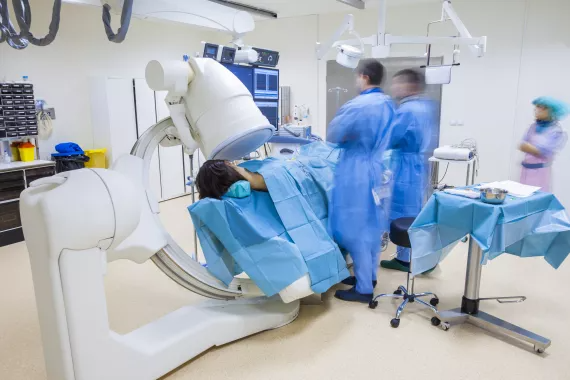Experts call for better radiation protection for female healthcare workers
15 April, 2023

Authors of a new editorial published in BMJ are calling for more stringent radiation protection standards for women working in healthcare.
Published April 12, the new piece highlights the increased risk of developing breast cancer that female healthcare workers face due to their routine exposure to ionizing radiation. This is of particular concern for women who are involved in image-guided radiology procedures, especially given the ever-growing presence of females in the field, the authors noted.
“At consultant level, women make up 7%, 12%, and 16% of the UK trauma and orthopedic, interventional radiology, and cardiology workforces, respectively,” co-author of the paper Emily James, radiation protection supervisor at King’s College Hospital NHS Foundation Trust in London, and colleagues explained. “As the number of female trainees entering these specialties increases, it is essential that the risks are further investigated, available evidence is considered, and equipment provision improved to minimize this risk.”
Although procedures that expose staff to ionizing radiation generally require those involved to wear lead aprons and lead thyroid collars for protection, most of this equipment leaves the upper outer quadrant and axilla exposed. This vulnerability is of particular concern since the axilla is a location where breast cancer is commonly identified.
They pointed to several studies that portray the increased risk of breast cancer among female healthcare workers exposed to ionizing radiation, highlighting one that found female orthopedic surgeons (who routinely use imaging during surgery and procedures) have a nearly fourfold risk of being diagnosed with breast cancer compared to the age-matched female population. Other studies involving radiologic technologists, radiologists, cardiologists and surgeons also have provided evidence of increased cancer risk among female healthcare workers.
So, what can be done?
The authors noted that the best way to protect staff against the adverse effects of ionizing radiation is to reduce exposure durations, increase distances from the source of exposure and shield all workers with protective aprons/clothing. In regard to lead aprons that leave the axilla region exposed, the authors suggested that designs for these aprons should include cap sleeves or additional coverage to protect the axilla.
“Possible designs to protect the upper outer quadrant of the breast include axillary shields, sleeves that can be worn under standard gowns, gowns with capped sleeves, and axillary wings,” they suggested, adding that such designs have been found to significantly reduce intraoperative exposure.
Useful Links:
Source: healthimaging.com
TAG(s):
